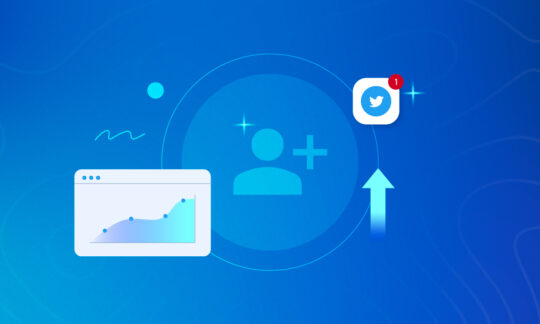Let’s write a Hollywood ending to the movie misrepresentation of AI
Bots: Reality vs expectations
There is a reason they call it science fiction, not science fact. It’s 2019. We find ourselves in the year that Ridley Scott’s 1982 noir masterpiece Blade Runner was set. Surely there should be android hunters running around the rain-soaked streets right now? Where are the attack ships on fire off the shoulder of Orion? C-beams glittering in the dark near the Tannhäuser Gate?
Next year also marks an important date; 2020 is the 100-year anniversary of the “invention” of the robot. Karel Capek coined the word in his 1920 play Rossum’s Universal Robots. It’s worth noting that the etymology is from the Czech word meaning “hard work” or “serf labour”. However, while Hollywood interpretations of robots have largely followed this lead—that robots and artificial intelligence are tools for humans to use—the movies have also taken many leaps for the sake of telling a fun story. People’s expectations based on the sci-fi blockbusters they have seen are far from technological reality.
As chatbot specialists, we want to separate the big myths from the facts. Let’s look at some famous Hollywood representations of robots and try to separate the science fiction from the facts of the AI age we now live in.
Hollywood Bots 101:
(1100101)
They look like humans
So, let’s start right here in 2019. A rooftop in Los Angeles. Rutger Hauer is delivering perhaps the greatest death-scene soliloquy in movie history. Meanwhile, Harrison Ford’s Rick Deckard stands opposite him, so entirely human in every way that he does not even realize he is himself a machine (if, of course, you prescribe to that particular Blade Runner theory).
Hollywood has created robots in our own image ever since sci-fi has been put on celluloid—possibly because it was cheaper and easier to pay humans to act like robots than to build robots that acted like humans. The rebooted Westworld TV series has picked up nearly a dozen Emmys since 2016, but Yul Brynner was the original homicidal robot cowboy gunning down unfortunate park guests as long ago as the early 70s.
But if robots are tools, the idea of making them look anything like humans is as redundant as putting arms, legs and a face on a hammer or a screwdriver. Robots don’t look like Yul Brynner or Harrison Ford; they are actually single mechanical arms spray-painting or screwing together cars in factories, or mine detecting bots on wheels.
And while robots are inhuman physical tools carrying out these tasks, what we call Artificial Intelligence has no form at all. A customer service chatbot, for example, is just lines of code stored upon a server. More intelligence means more servers, not more arms and legs.
Hollywood Bots 102:
(1100110)
They sound like humans
There are plenty of examples of on-screen robots whose voices have been synthesized to sound like a Vocoder from an 80s disco tune. But the shift towards human-sounding robots in movies means that it is now actually painful to compare something like Twiki from Buck Rogers to the affable robot Gerty from Duncan Jones’s 2009 low-budget breakthrough Moon.
In fact, it’s not a new trend, Hal from Kubrick’s 2001: A Space Odyssey spoke with perfect diction as far back as 1968. Kubrick was on point; the way that Hal speaks is almost a carbon copy of Siri or Alexa. But try and have a chat with Siri or Alexa for a few minutes. Here are things they will not do:
- Forget what they were saying halfway through a sentence
- Have a different tone and pitch of speech depending on if they are happy, tired, or ill
- Punctuate sentences with um, er, like, as I say, or random sneezes and coughs
- Use nonsense words like irregardless or pacifically, or mix up your and you’re
Vocal bots sound like perfect versions of us, which is what makes them sound so artificial. They are programmed to replicate the most common denominators in human speech. They have Grammarly built into their hardware; which essentially means they never make a mistake. And, as we know, to err is human.
Training bots on clusters of free speech and listening to public posts on social media is teaching chatbots to use more natural versions of the human language, and even to gain something of a personality—moving beyond examples like Gerty and into the territory of something like Scarlett Johansson’s Samantha from the movie Her.
The question we need to address at this point is if it really matters. Research shows that customers ultimately do not mind if they are talking to a bot, as long as their problem is solved. They may even feel more secure giving details like personal data to a computer program than to another human being.
Hollywood Bots 103:
(1100111)
They can read your emotions
Nobody likes C3PO, right? He’s a simpering clutz. He’s also hard to look at as anything more than a thin man in a weird gold suit because of the fact that he behaves so much like a human. The worrying, the fear, and the appreciation of Luke’s emotions are all features that don’t suit Artificial Intelligence. Every time he says “What’s wrong, Master Luke?” it breaks through an uncomfortable barrier. We expect AI to serve our needs but not interact with us on an emotional level.
There are AI programs that are able to read emotions. The most typical examples are simple tools which have been shown thousands of pictures of different faces displaying various emotions and are able to assign labels like happy, sad, ashamed, and worried to pictures, but they don’t know what to do with the information. If your sister looks sad, you should probably ask her if she is okay. If your wife has the exact same expression, you should wait an hour before asking (and also think if perhaps you have done something to make her feel that way!). These AI programs can perform the trick of recognizing emotions, but they don’t always have the emotional intelligence to deal with the knowledge.
Our chatbots, as discussed by our COO Bartosz Baziński in a separate blog, chatbots are quite good at filtering out the superfluous white noise within contacts from customers to get to the heart of the problem, as shown in the examples below. However, they are also augmented with something like the example described above and are able to pick up the underlying sentiment of a customer. They are not able to adapt and resolve situations, but they are smart enough escalate dissatisfied customers to human agents who can better deal with emotions. So, while robots cannot always appropriately react to emotions, they can at least recognize them and take some action.
Hollywood Bots 104:
(1101000)
They are smarter than humans
I rewatched Star Trek: First Contact recently. It contains perhaps my favourite quote from the entire franchise. The Borg queen has attempted to assimilate Data and failed. Picard asks him how close he came to accepting. “For a time I was tempted by her offer,” replies Data. “How long a time?” asks Picard. Data cooly replies, “0.68 seconds, Sir. For an android, that is nearly an eternity.”
Worf was the muscle, Picard was the born leader, Troi was the moral inquirer, Riker was the dude who sat down in a weird way, and Data was the encyclopedic brain and solver of complex problems. Hollywood long ago decided that all robots and forms of AI had to be smarter than all of their human counterparts combined.
Is it the reality? Yes and no.
Artificial Intelligence is capable of processing vast amounts of data much faster than the human brain could ever hope to function. It would take a lifetime for you or me to scan all the web pages that Siri can evaluate in less than a second. And machine learning means that Artificial Intelligence engines are constantly interpreting data and automatically recalibrating to become ‘smarter’ at a faster rate than humans can take in information.
However, we need to frame that argument within two important factors. Firstly, all AI and ML are built and programmed by humans. An AI computer system will be smart, but its level of ‘intelligence’ is still linked to the quality of its code. Our chatbots are excellent, and they are constantly improving because they are augmented by Machine Learning rather than just a simple rule-based system, but we still need really smart humans at the beginning and end of the process to help them along.
The second issue with describing Artificial Intelligence as ‘smarter’ than humans is that computers are much better than humans at completing very specific, narrow tasks. Their intelligence is limited to one thing. Chatbots have the capacity to be an integral part of your customer service strategy and can free up your human employees for more challenging work, but they can’t build a house. Those robots you have probably seen running on treadmills are impressive feats of engineering, but they can only run—if you command one to sit down, it will not move a metal muscle.
Even Siri and Alexa, as all-powerful as they seem, are really just neat tools that are programmed to do one job very well. They search the internet and give you results. They may have some plug-ins that allow you to use that information in different ways, but they are not also mapping space or the human brain. We have other AI engines for those tasks.
Hollywood Bots 105:
(1101001)
Robots are a danger to humans
As a writer, I am not left scratching around for an example to prove my point here. Almost every sci-fi movie ever made somehow involves man’s attempts to build technology leading to a path of chaos and destruction. Jeff Goldblum messing up in The Fly, the revelation that an android built by humans was the genesis of the facehuggers in the Alien franchise or a various pandemics in countless films; whenever humans create advanced technology, they somehow end up endangered by its power.
Hollywood seems to be positively Luddite in its narrative. A fear of AI and Machine Learning has been hard-coded into us, which is why non-profit organizations like Humans For AI are now trying to “simplify the mystery” around the technology. They want to explain that, while AI does carry some threat and is going to disrupt jobs in every industry, it also brings great opportunity—both for individuals to build careers in an exciting new area, and for human beings, as a race, to harness technology to help solve the great issues of our time like climate change and disease.
But what if Hollywood has been right all along?
People within the AI industry are aware that the technology is so powerful that it has the potential to cause great harm if it is used inappropriately, which is why Silicon Valley is starting to lead the conversation around AI and Moral Code. They also understand that we are so far down the line with AI that there is no turning back. It is a reality of our lives and one of the main technological elements that will shape our future as a species. What we need is for lawmakers and governments to work together with the industry to create the correct checks and balances, so that we can harness AI and ML to explore other planets instead of destroying our own! As Christopher Wylie stated at last year’s Web Summit,
“If we can regulate nuclear power, why can’t we regulate some code?”
Hollywood Bots 201
(11001001)
When the movies get it right…
The most realistic recent movie portrait of a robot is probably Wall-E. That little dude spends the first half of the film tirelessly doing a single task. It is neither bored nor curious, it is simply programmed to do something to the best of its ability. Then, as different obstacles are put in its way and it discovers new things, it is able to adapt and change to circumstance.
Customer service chatbots are much the same. They are digital robots which exist in lines of code. They are programmed to do a single task: help people with their issues. They do so efficiently and tirelessly, and at less cost than a human being. The most advanced examples are also able to improve performance over time through unsupervised learning. But they are not Samantha from the movie Her. They are not C3PO or Data or Hal. They are digital tools. Granted, AI and ML are among the most powerful tools mankind has ever created, but they are tools all the same.



